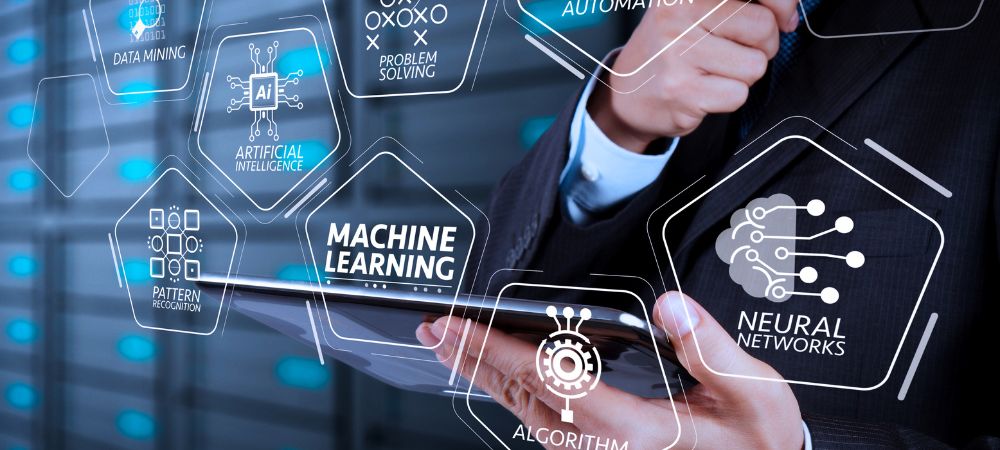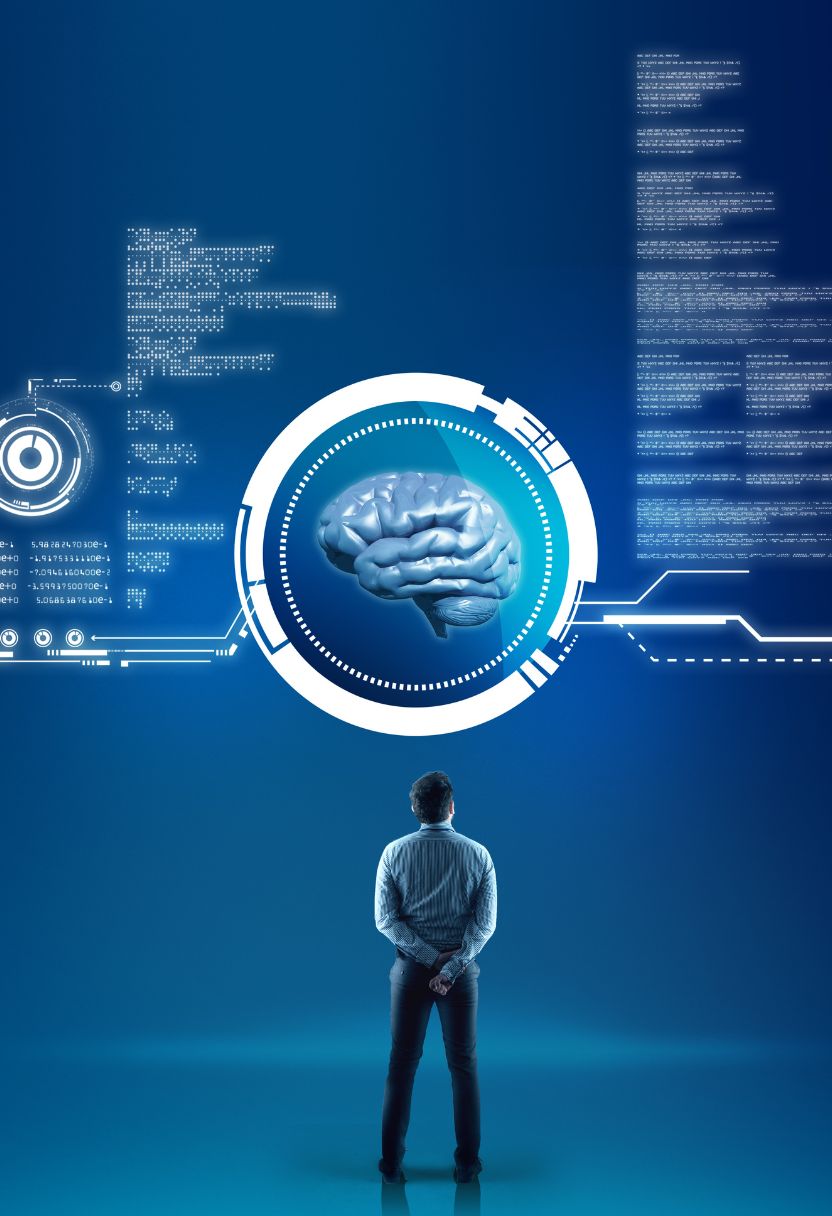

Bayesian statistics ain't your ordinary kind of statistics. It’s a branch that revolves around something called probability, but not just any old probability—subjective probability. Now, don’t freak out; subjective here doesn’t mean it’s all made up! Rather, it means we’re using prior knowledge or beliefs to update our understanding as new data rolls in.
Obtain the inside story view this.
One of the fundamental concepts you gotta grasp is the notion of **prior** and **posterior** probabilities. The prior is what you believe about a situation before seeing any evidence. Imagine you're betting on a horse named Lightning Bolt. Based on past races (your prior), you think there’s a 30% chance he’ll win again. Then comes along some new info: Lightning Bolt has been training extra hard lately. This new data helps us update our belief or calculate the posterior probability, which is essentially an updated version of our prior belief considering this fresh piece o' information.
Next up, there's **likelihood**, another key term in Bayesian lingo. Likelihood isn't quite the same as probability, though they sound like they're buddy-buddy terms. It's actually more about how probable your observed data is given your current model or hypothesis. So if you think Lightning Bolt's got that 30% winning chance (your hypothesis) and then see his recent sprint times (your data), likelihood tells ya how well those sprint times fit with your initial guess.
Now let’s talk about **Bayes’ theorem**, shall we? Named after Thomas Bayes, it's kinda like the backbone for Bayesian stats. The theorem provides a mathematical formula to update our priors into posteriors using the likelihood of observed outcomes and some normalization factor called evidence or marginal likelihood. In plain English? It mixes what we already know with what we've just learned to give us an improved estimate.
Don't forget about **conjugate priors** too! These are special types of priors that make calculations easier because when combined with their corresponding likelihood functions, they produce posteriors in the same family as the priors themselves—kinda like magic but without wands and spells.
Another crucial term is **credible intervals**, which are akin to confidence intervals in frequentist statistics but have different interpretations altogether—they tell us where certain parameters likely lie within a specified range based on our posterior distribution.
Lastly, let me mention MCMC or Markov Chain Monte Carlo methods briefly because they’re super important when dealing with complex models where exact solutions are almost impossible to find by hand or even regular computer algorithms alone! MCMC helps approximate these solutions by sampling from distributions iteratively—a real lifesaver!
So there you go! A whirlwind tour through Bayesian terminology that's hopefully less daunting now than it was before. Ain't perfect grammar-wise maybe – heck no – but sometimes that's how human conversations roll!
When diving into the world of statistics, you’ll often come across two main approaches: Bayesian and Frequentist. Now, these two methods might seem like they’re worlds apart, but both aim to make sense of data and uncertainty. So, what’s really going on between them? Well, let’s break it down a bit.
First off, the Bayesian approach is all about probability as a measure of belief or certainty. Imagine you’ve got a coin that may not be fair. Instead of assuming anything without evidence, you start with a prior belief about its fairness. Then, as you flip the coin and gather data, you update your beliefs using Bayes’ Theorem. It’s kind of like saying “I thought this before I saw any flips; now I’ve seen some flips and think this.” You don’t just throw away your initial thoughts—they evolve.
On the other hand, the Frequentist approach doesn’t care much for prior beliefs. This method focuses more on long-term frequencies. For instance, if you wanna know whether that same coin is fair or not, you'd conduct an experiment where you flip it many times and analyze how often heads vs tails appear. In essence, you're relying on sampling distributions to make inferences about your parameters.
But hey—here's where things get interesting! Bayesian statisticians use something called "priors," which can be subjective or based on past experiences. Critics argue that this introduces bias because it's influenced by what someone already thinks or knows beforehand. However(!), supporters say that priors are actually advantageous since they incorporate existing knowledge into new analyses.
Frequentists aren't having any of that prior stuff though! They believe only in what's observable from experiments conducted under repeatable conditions should influence our conclusions—no room for subjective input here! But wait—it also means they're kinda stuck when there's limited data since they can't leverage any prior information to guide their analysis.
Another point worth mentioning is how both camps handle hypothesis testing differently. In Frequentist land (yes I'm calling it that!), significance tests are used quite rigorously—you've probably heard terms like p-values thrown around here—and decisions hinge upon fixed error rates such as 0.05 level significance cutoffs etc., while Bayesians prefer using posterior probabilities instead which directly give odds supporting one hypothesis over another rather than binary reject/accept outcomes typical within frequentism!
Yet even with these differences there ain't no denying each has its strengths depending upon context/application needed; sometimes blending elements from both frameworks proves beneficial too!
So yeah...whether you're team Bayesian who loves updating beliefs with every new piece info—or diehard Frequentist sticking purely empirical grounds—remember neither's inherently superior nor mutually exclusive either! Both offer valuable insights tackling life's uncertainties head-on thanks unique vantage points provided statistical lens each employs!
Data Science, huh?. It's one of those buzzwords that seems to be everywhere these days.

Posted by on 2024-07-11
In today's tech-savvy world, the role of a data scientist ain't just important; it's downright essential.. See, we live in an age where data is literally everywhere, from our smartphones to our smart fridges.

Posted by on 2024-07-11
Machine learning's impact on data science is undeniably profound, and its future prospects are both exciting and a bit overwhelming.. It's hard to deny that machine learning has revolutionized the way we approach data analysis, but it hasn't done so without its fair share of challenges. First off, let's not pretend like machine learning just popped up out of nowhere.

Posted by on 2024-07-11
Navigating job searches and interviews in the field of data science can sometimes feel like an enigma, wrapped in a riddle, inside a mystery.. But hey, it's not as daunting as it seems!

Posted by on 2024-07-11
Mastering data science ain’t just about crunching numbers and building fancy algorithms.. There's a whole other side to it that experts don’t always talk about—networking with industry professionals and joining data science communities.

Posted by on 2024-07-11
Bayesian methods in data science have been gaining traction lately, and it's not hard to see why. The flexibility and powerful inferential capabilities they offer can be game-changers for those working with complex datasets. But what exactly are Bayesian methods, and how're they applied in the realm of data science?
First off, let's talk about what we mean by Bayesian statistics. Named after Thomas Bayes, this approach is all about updating beliefs based on new evidence. Rather than sticking rigidly to initial hypotheses or models, Bayesian methods allow us to refine our predictions as we gather more data. You might've heard folks say "Bayesian thinking" - it’s basically just a fancy way of saying we're constantly learning and adapting.
Now, you may think traditional frequentist methods hold sway in most statistical applications—and you'd be right! But Bayesian approaches are carving out their own niche, particularly when it comes to complex problems where uncertainty reigns supreme.
Take machine learning for example; one big application area of Bayesian methods is model selection. Instead of picking one best model from a set of candidates (which might not even exist), Bayesian techniques let us weigh multiple models based on their probabilities given the data. This way, we don't commit prematurely but keep options open while continuously refining our understanding.
Oh! And another thing: parameter estimation becomes much more intuitive under a Bayesian framework. Using prior distributions—essentially our pre-existing knowledge or beliefs—we update these priors with observed data to get posterior distributions—the refined beliefs after seeing the evidence.
Don't think that's all there is to it! In real-world scenarios like fraud detection or medical diagnosis, uncertainties abound and stakes are high—errors can cost lives or millions of dollars. Here too, Bayesian methods shine by providing probabilistic assessments rather than binary yes-no answers.
Furthermore, hierarchical modeling is an area where Bayes absolutely excels. When dealing with nested data structures (think patients within hospitals within regions), these models help capture complexities that simpler approaches can't handle effectively.
But hey, it's not like everything's rosy in the world of Bayes either! One downside often cited is computational intensity; approximating posterior distributions can be pretty taxing on resources compared to some faster frequentist alternatives.
And let's admit it: constructing meaningful prior distributions isn't always straightforward – sometimes you're left scratching your head wondering if you've biased your entire analysis without realizing it!
So yeah... while there's no denying traditional statistics still hold significant ground across many fields—Bayesian methods ain't just some passing fad—they're here bringing fresh perspectives and robust solutions especially suited for today's intricate data challenges.


Bayesian statistics is a fascinating area that offers a different take on probability and data analysis. Unlike frequentist methods, which rely heavily on long-term frequency properties, Bayesian statistics incorporates prior beliefs and updates them with new evidence. This approach provides a more intuitive understanding of uncertainty and makes it easier to incorporate external information into the analysis.
One of the key algorithms in Bayesian statistics is Markov Chain Monte Carlo, often referred to as MCMC. It's not just an algorithm but rather a collection of methods for sampling from complex probability distributions when direct sampling isn’t possible. The idea behind MCMC is to construct a Markov chain whose equilibrium distribution matches the target posterior distribution. The most popular technique under this umbrella is the Metropolis-Hastings algorithm, which iteratively proposes new samples based on the current state and either accepts or rejects them based on their likelihoods.
Another important technique is Gibbs Sampling. It’s kinda like Metropolis-Hastings but simpler because it samples each variable from its conditional distribution given the others. Instead of proposing new values for all variables at once, Gibbs Sampling updates one variable at a time while keeping others fixed. This method works particularly well when dealing with high-dimensional problems where full joint distributions are tricky to handle directly.
Now, let's talk about Variational Inference (VI). While MCMC methods are powerful, they can be computationally expensive especially for large datasets or very complex models. VI comes in handy here by approximating the intractable posterior distributions through optimization rather than sampling. It transforms inference into an optimization problem where you minimize the Kullback-Leibler divergence between an approximate distribution and the true posterior.
Empirical Bayes might sound fancy, but it’s basically using data to estimate the prior distribution instead of specifying it outright. You start by fitting your model without priors and then use these estimates as “empirical” priors for subsequent analyses. It's practical 'cause sometimes you don’t have enough background knowledge to set informative priors beforehand.
Don't forget about Hierarchical Models! They’re super useful when you have nested data structures or groups within groups—think students within classes within schools. Hierarchical modeling allows you to share information across different levels leading to more robust estimates especially when some groups have limited data.
Finally, we’ve got Sequential Monte Carlo (SMC) also known as Particle Filters used primarily for dynamic systems evolving over time such as tracking moving objects or financial time series forecasting . SMC methods represent probabilities using discrete particles that move according to certain rules reflecting both system dynamics and observational noise updating beliefs sequentially as new observations arrive .
So yeah , these are some core algorithms & techniques in Bayesian stats –each having its own strengths depending upon specific needs & constraints . Isn’t it interesting how this field blends together so many concepts providing flexible yet powerful tools ?
Bayesian statistics has been making waves in the data science world, and for good reason. It offers a unique approach to statistical analysis that's both flexible and powerful. If you haven't already explored Bayesian methods, you're kind of missing out on some cool advantages. But hey, it's not all sunshine and rainbows; there are challenges too.
One major advantage of Bayesian statistics is its ability to incorporate prior knowledge. Unlike frequentist methods, which rely solely on the data at hand, Bayesian stats let you include previous findings or expert opinions into your analysis. This can be super useful when you're dealing with limited data or trying to update predictions as new information comes in. You don't have to start from scratch every time—a real time-saver!
Another neat thing about Bayesian approaches is their interpretability. The results are often more intuitive because they provide probabilities instead of just binary outcomes like reject or fail to reject a null hypothesis. For instance, you can say there's an 80% chance that a parameter lies within a certain range, which is way easier for stakeholders to understand than p-values.
However, let's not get too carried away here—Bayesian methods have their downsides too. One biggie is computational complexity. These techniques often require sophisticated algorithms like Markov Chain Monte Carlo (MCMC) simulations to estimate posterior distributions. These calculations can be quite demanding on resources and may take forever if your dataset's large or your model's complicated.
Also, choosing priors ain't always straightforward. While incorporating prior knowledge is nice in theory, it can also introduce bias if not done cautiously. You might end up skewing your results based on subjective beliefs rather than objective evidence, which ain't ideal.
Moreover, these methods haven’t gained widespread adoption yet mainly because they're perceived as hard to grasp for those who aren't statisticians by trade. The steep learning curve could deter many budding data scientists from diving deep into this field.
In summary, while Bayesian statistics brings some incredible tools to the table—like incorporating prior knowledge and providing intuitive probabilistic interpretations—it’s not without its hurdles such as computational demands and potential biases from priors. Plus, the learning curve isn't exactly gentle either! So yeah, it’s a mixed bag but definitely worth exploring if you’re keen on expanding your statistical toolkit in data science.
So why not give it a shot? You might find that despite its challenges, the benefits make it well worth the effort!

Bayesian statistics, a powerful and versatile branch of statistics, has found numerous applications in real-world scenarios. It's not without its critics or challenges, but when it comes to making sense of uncertain data, Bayesian methods often shine brightly. Let's delve into some actual examples and case studies to see how these techniques are applied in practice.
One fascinating example hails from the field of medicine. Imagine you're a doctor trying to diagnose a disease based on a patient's test results. Traditional diagnostic methods might give you a probability of having the disease if the test is positive or negative. But hey, diseases don't always follow such simple rules! This is where Bayesian inference comes handy. By incorporating prior knowledge – say, the prevalence of the disease in a population – with new evidence (the test result), doctors can update their beliefs about the likelihood that a patient indeed has the disease. It ain't perfect, but it's way more informative than just relying on initial probabilities alone.
Another compelling example is found within machine learning and artificial intelligence. Ever wondered how self-driving cars make decisions? They don’t just blindly follow pre-programmed routes; instead, they constantly update their understanding of the environment using Bayesian algorithms. These systems evaluate sensor data to predict possible obstacles or changes in road conditions and adjust their actions accordingly. Without this continuous updating process facilitated by Bayesian methods, autonomous vehicles would be far less reliable and safe.
Speaking of safety, let's talk about spam detection in emails – something we all deal with daily! Email providers use Bayesian filters as one part of their strategy to keep spam outta your inbox. Initially trained on large datasets containing both spam and non-spam messages, these filters assign probabilities to incoming emails being junk based on certain features like word frequency or sender information. When new emails come through, these probabilities get updated dynamically – ensuring that even as spammers change tactics over time (which they always do), your email provider stays one step ahead.
And oh boy, let’s not forget finance! Investment firms utilize Bayesian models for portfolio management and risk assessment. Instead of relying solely on historical data which might not predict future trends accurately enough (think market crashes!), financiers incorporate expert opinions and real-time market information into their models using Bayes' theorem. This approach helps them manage risks better while potentially maximizing returns.
Despite its benefits though, implementing Bayesian statistics isn’t without its hurdles; it requires computational power and expertise which aren't always readily available everywhere.. Plus there’s sometimes skepticism regarding subjective priors - after all who decides what 'prior knowledge' should be included?
In conclusion: whether diagnosing diseases more accurately , teaching machines how navigate our chaotic world safely , filtering annoying spam outta our inboxes ,or managing investment portfolios wisely —Bayesian statistics offers invaluable tools for tackling complex problems under uncertainty . So yeah,it may have flaws like any other method but when used correctly ,it can provide insights traditional approaches simply can’t match .
Bayesian statistics is an area that's been around for quite a while, but it's only recently that it's started to gain real traction in the field of data science. With the ever-increasing amounts of data we're dealing with these days, it's no wonder folks are looking for more robust methods to make sense of it all. So, what's next for Bayesian statistics in this booming field? Well, there are a few future trends and developments worth keeping an eye on.
First off, let's talk about integration with machine learning. It ain't no secret that machine learning has taken the world by storm, but integrating Bayesian methods into these models is still kinda new. The beauty of Bayesian approaches lies in their ability to incorporate prior knowledge and uncertainty directly into the model. This means we can build more reliable and interpretable systems – something that's sorely needed when we're dealing with black-box algorithms.
Another trend is the increased use of probabilistic programming languages like Stan and PyMC3. These tools are making it easier for data scientists to implement Bayesian models without getting bogged down by complex math or computational hurdles. And let's face it – anything that makes our lives simpler can't be bad! As these languages become more user-friendly and efficient, we'll likely see even more adoption across various industries.
Then there's the rise of approximate Bayesian computation (ABC). Traditional Bayesian methods can be computationally expensive, especially with large datasets or complex models. ABC offers a way around this by using simulation-based techniques to approximate posterior distributions without having to solve everything analytically. It's not perfect, but hey – nobody's perfect!
On top of that, there's a growing interest in combining Bayesian stats with deep learning frameworks such as TensorFlow Probability and Edward2. These tools allow us to create hybrid models that leverage both worlds: the flexibility and expressiveness of deep learning along with the principled uncertainty quantification from Bayesian inference.
Of course, no discussion would be complete without mentioning hardware advancements like GPUs and TPUs which have revolutionized how we handle computations at scale. As hardware continues to evolve so will our ability to run even more sophisticated Bayesian analyses faster than ever before.
But let’s not forget one crucial aspect – education! For all these advancements to really take hold within industry practices it'll require better training programs focused specifically on teaching applied Bayesian methods in data science contexts because truthfully speaking understanding all those nuances isn’t everybody’s cup o' tea!
So yes indeed - while challenges remain ahead undoubtedly exciting times lie ahead too if you're involved anywhere near intersection between bayesians & big-data-science . Who knows where exactly path leads? But surely bound somewhere interesting..